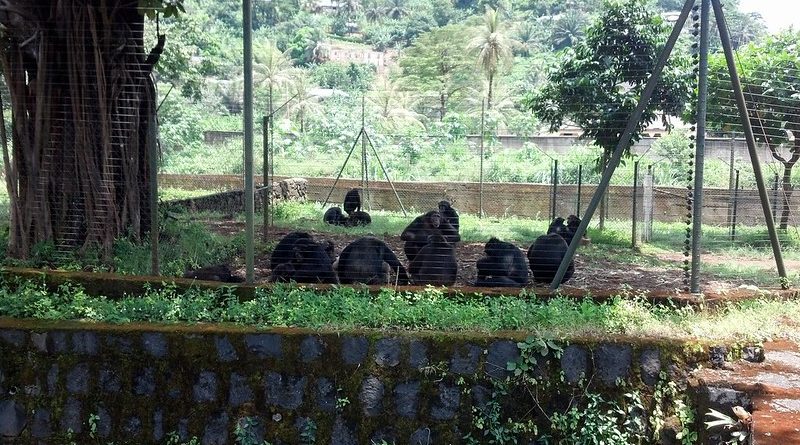Limbe Wildlife Centre, Cameroon
Nature Facts
Where: Limbe, southwest coast of Cameroon, central-west Africa
Nature: A sanctuary for 16 types of primate including gorillas, chimps, mandrills, and drills
Be aware: Poaching is a serious hazard for Cameroon’s wildlife, and many primates re-introduced into the wild end up as an exotic meat dish
Where It’s At
Until recent years, Cameroon was rich in wildlife. Hundred of species hid in the dense rainforest, but after years of deforestation and unpunished poaching the number of species on the endangered list is soaring. Today you’d be lucky to spot a creature of the wild in its natural habitat, but you can’t come to Cameroon and not experience its magnificent wildlife. Limbe Wildlife Centre lets you can get as close as possible to some of the most amazing apes and monkeys species on earth.
Visiting the Limbe Wildlife Centre
Otherwise known as the Limbe Primate Sanctuary, it’s renowned as one of the leading centres of wildlife conservation in West Africa. Located in Limbe on the southwest coast, the Centre replaces a former zoo on this spot. For the last decade, the centre has been a vital refuge and breeding centre for apes and other primates rescued from Cameroon’s bush meat trade. For a small entry fee you get access to the centre and the money goes to a good cause.
Limbe Wildlife Centre is managed by Felix Lankester, a British vet, and it is funded byPandrillus, an American association based in Nigeria who set up captive breeding programmes in West Africa for eventual release of primates into the wild. However their task is a long term one as it’s not easy to release any captive animals in the wild because they can become accustomed to humans and there are few safe places because of the soaring bush meat trade.
Primates in the Centre
Sixteen types of primate are rescued here include lowland gorillas, chimpanzees, drills, and mandrills:
– Cameroon is one of the few countries where coastal and lowland gorillas still exist. Growing up to six feet tall and weighing up to 210kg, they’re primarily vegetarian, much of their diet consists of plants like bamboo, wild celery, and other leaves. Baby gorillas are especially vulnerable and can’t survive more than five days without their mother, which is why so few can be rescued.
– Mandrills are endemic to West Africa; in the wild they move in troops of hundreds, even thousands, making a huge racket. They differ from other monkeys because of the male’s large size and short tails.
– Drills are highly endangered; there are estimated to be only 3,000 left in the wild, and their last remaining habitat is in Cameroon and across the border in Nigeria.
– Chimpanzees, our closest relatives, are also at great risk of disappearing. Only 120,000 remain in the wild in Central Africa and everyday thousands more are shot.
More Information
Limbe Wildlife Centre
Official website for the centre with reports and photos
Pandrillus
Official website for Pandrillus, Nigeria with pictures of their drill primates
Main Image: Limbe Wildlife Centre, Claudine Paul Jouët, Flickr Creative Commons
By Marie-Laure Vigneron




